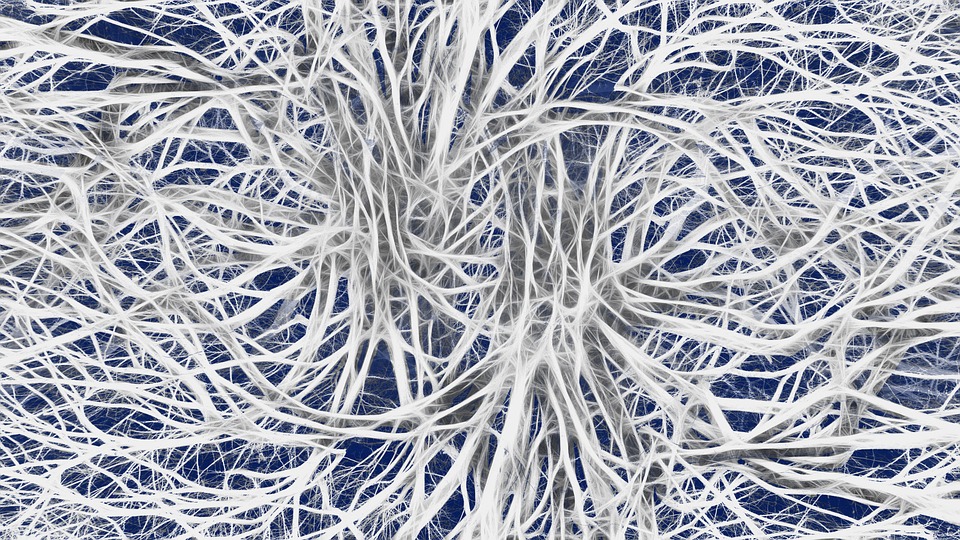The Brain vs. The Body: How the Nervous System Balances Control
Introduction
The intricate relationship between the brain and the body forms the cornerstone of human physiology and behavior. The nervous system serves as a complex communication network, facilitating interactions between various body systems, ensuring that the brain and body work in synchrony to adapt, function, and thrive. In this article, we explore the balance of control between the brain and the body, investigate the roles of the central and peripheral nervous systems, and delve into the mechanisms that underpin homeostasis and response to stimuli.
The Nervous System: An Overview
The nervous system comprises the brain, spinal cord, and an extensive network of nerves. It can be broadly categorized into two main parts: the central nervous system (CNS) and the peripheral nervous system (PNS).
Central Nervous System (CNS)
The CNS is the command center of the body, consisting of the brain and spinal cord. It processes sensory information, coordinates responses, and is responsible for higher-order functions such as thought, memory, and emotion.
-
The Brain:
- The brain processes information from the senses, integrates it, and formulates responses.
- It regulates vital functions such as heart rate, breathing, and blood pressure.
- Higher-level cognitive functions, including reasoning, decision-making, and emotional regulation, occur primarily in the cerebral cortex.
- The Spinal Cord:
- The spinal cord acts as a conduit, transmitting signals between the brain and the rest of the body.
- It also handles reflex actions independently of the brain to ensure rapid responses to stimuli.
Peripheral Nervous System (PNS)
The PNS connects the CNS to limbs and organs. It is further divided into the somatic nervous system and the autonomic nervous system (ANS).
-
Somatic Nervous System:
- Responsible for voluntary movements and the relaying of sensory information to the CNS.
- It controls skeletal muscles and is primarily involved in conscious activities.
- Autonomic Nervous System (ANS):
- Governs involuntary functions like heart rate, digestion, and respiration.
- It is divided into the sympathetic and parasympathetic systems, which balance each other out to maintain homeostasis.
The Brain-Body Connection
Understanding how the brain interacts with the body is crucial for recognizing how our physiological state influences behavioral patterns and vice versa. This connection can be observed across numerous dimensions.
Sensory Processing
The brain plays a critical role in processing sensory input. Sensory receptors in the body relay information about external stimuli, such as touch, sound, and vision.
- Example: When you touch something hot, sensory neurons in your skin send signals to your spinal cord and brain, triggering a quick withdrawal reflex as well as a conscious acknowledgment of the pain.
Motor Control
Motor commands emanate from the brain, travelling through the spinal cord and peripheral nerves to reach muscles, facilitating movement.
- Example: The primary motor cortex in the frontal lobe is responsible for executing voluntary movements. The intricate planning and execution of these movements involve multiple brain regions, demonstrating how cognitive processes are entwined with physical actions.
Emotional and Neurological Responses
The brain not only controls physical actions but also regulates emotional responses and interpersonal connectivity.
- Example: The amygdala, a key player in emotional processing, influences how we react to stressful situations. The body responds accordingly, activating the fight-or-flight response, which includes increased heart rate and heightened adrenal activity.
Homeostasis: The Balancing Act
Homeostasis—the ability to maintain a stable internal environment—is a critical function of the nervous system. This balancing act involves continuous monitoring and adjustments to ensure that the body’s systems operate optimally.
Role of the Autonomic Nervous System
The ANS is pivotal in the maintenance of homeostasis, managing involuntary bodily functions.
-
Sympathetic Nervous System:
- Activates the "fight or flight" response in stressful situations.
- Increases heart rate, dilates airways, and inhibits digestive functions to prioritize energy for immediate action.
- Parasympathetic Nervous System:
- Promotes the "rest and digest" state, conserving energy and promoting relaxation.
- Slows the heart rate and enhances digestive processes.
The dynamic interplay between these two branches of the ANS is crucial for maintaining equilibrium in response to internal and external changes.
Feedback Mechanisms
Feedback mechanisms are essential for homeostatic regulation. Two types of feedback systems—negative and positive feedback—play a vital role.
-
Negative Feedback:
- Most homeostatic processes operate through negative feedback loops, where a change in a given variable triggers the response that counteracts the initial change.
- Example: The regulation of blood glucose levels involves insulin and glucagon. An increase in blood glucose prompts insulin release, which decreases blood sugar levels by facilitating cellular uptake.
- Positive Feedback:
- In contrast, positive feedback amplifies responses and processes, often leading to a specific outcome, such as childbirth.
- The release of oxytocin during labor strengthens uterine contractions until delivery occurs.
Neuroplasticity: The Brain’s Adaptive Capacities
Neuroplasticity—the brain’s ability to reorganize and adapt by forming new neural connections—illustrates the ongoing relationship between the brain and body throughout life.
Mechanisms of Neuroplasticity
Neuroplasticity is influenced by experience, learning, and injury, demonstrating how adaptation occurs in response to changes in environment or internal states.
-
Experience-dependent Plasticity:
- Learning new skills or acquiring knowledge can change brain structure and function.
- Example: Musicians often show alterations in brain regions associated with auditory processing and motor control due to their extensive training.
- Functional Plasticity:
- Following injury, some brain functions may shift to different areas of the brain.
- Example: After a stroke, undamaged areas may take over the roles of the injured regions, aiding in recovery.
Mind-Body Connection
The interplay of neuroplasticity and the body is a testament to the mind-body connection. Cognitive and emotional changes can lead to physiological alterations.
- Example: Practices such as meditation and mindfulness have been shown to enhance neuroplasticity and improve emotional regulation, thereby positively affecting physical health.
The Impact of Chronic Stress on the Brain-Body Balance
Chronic stress can significantly disrupt the delicate balance between the brain and body, resulting in a myriad of health issues.
Physiological Changes
The long-term activation of the stress response can lead to:
-
Hormonal Imbalances:
- Prolonged cortisol release affects numerous body systems, including immune and cardiovascular functions.
- Neural Alterations:
- Chronic stress may diminish neurogenesis (the formation of new neurons) and change brain connectivity.
- Regions such as the hippocampus, responsible for memory and learning, can suffer from atrophy.
Psychological Consequences
The impact of chronic stress extends beyond physical health and interferes with emotional well-being, leading to issues such as anxiety and depression.
- Example: The interplay between chronic stress and mental health showcases the cross-talk between the brain and body, emphasizing the importance of integrated care approaches.
Therapeutic Approaches to Enhance the Brain-Body Connection
Understanding and harnessing the brain-body connection provides opportunities for enhancing well-being through various therapeutic approaches.
Mindfulness and Meditation
Research underscores the benefits of mindfulness and meditation in cultivating awareness of bodily sensations and emotional states.
-
Stress Reduction:
- Mindfulness practices can lower cortisol levels, improve mood, and foster resilience to stress.
- Enhanced Neuroplasticity:
- Regular meditation has been linked to structural changes in the brain, including increases in cortical thickness and volumes of the hippocampus.
Exercise and Physical Activity
Physical activity is critical not only for maintaining physical health but also for mental and cognitive well-being.
-
Neurogenesis:
- Exercise promotes the release of brain-derived neurotrophic factor (BDNF), a key protein involved in neurogenesis.
- Mood Enhancement:
- Exercise has been shown to alleviate symptoms of anxiety and depression, illustrating how physical health is tightly interwoven with mental health.
Nutritional Interventions
Nutrition plays a vital role in brain health, impacting cognitive function, mood, and overall well-being.
-
Omega-3 Fatty Acids:
- Found in fish and flaxseeds, omega-3s support brain function and have been linked to a lower risk of depression.
- Antioxidants:
- Nutrients such as vitamins C and E protect against oxidative stress and inflammation, factors that could impair neural functions.
Conclusion
The dynamic relationship between the brain and body is a testament to the complexity of human physiology. The nervous system orchestrates a delicate balance, ensuring that both the brain and body coordinate effectively to adapt and respond to an ever-changing environment. Understanding this interplay offers insights not only into human functioning but also into therapeutic approaches for enhancing health and well-being.
As research continues to elucidate the mechanisms governing this relationship, it becomes evident that a holistic perspective is essential. Recognizing the interplay between cognitive, emotional, and physical dimensions enables a more comprehensive approach to health, emphasizing the importance of nurturing both mind and body in the pursuit of optimal well-being.
References
- Alkon, D. L., & Pantoja, J. (2020). Neural Mechanisms of Stress and Recovery in the Brain. Journal of Neuroscience Research, 98(2), 200-215.
- Basso, M. R., & Eccard, C. (2019). Stress and Neuroplasticity: The Role of the Body in Learning and Memory. Neuroscience and Biobehavioral Reviews, 100, 54-67.
- Goleman, D. (2013). Focus: The Hidden Driver of Excellence. HarperCollins.
- Hölzel, B. K., et al. (2011). Mindfulness Practice Leads to Increases in Regional Brain Gray Matter Density. Psychiatry Research: Neuroimaging, 191(1), 36-43.
- Ratey, J. J., & Loehr, J. (2011). The Revolutionary Science of Exercise and the Brain. New York: Little, Brown Spark.
- van Praag, H., et al. (2000). Functional neurogenesis in the adult brain. Progress in Brain Research, 127, 183-194.
This article provides a comprehensive overview of the intricate dynamics between the brain and body, exploring how the nervous system plays a pivotal role in maintaining balance and control.


























Add Comment